- Home
- Technical Cooperation Projects
- Index of Countries
- Asia
- Nepal
- The Project on Participatory Rural Recovery
- Project News
- About Our Pilot Locations (Part 2) Chautara Sangachowkghadi Municipality, Sindhupalchowk District
Project News
2020-12-04
About Our Pilot Locations (Part 2)
Chautara Sangachowkghadi Municipality, Sindhupalchowk District
Chautara Sangachowkghadi Municipality (hereinafter referred to simply as ‘Chautara') is the District Headquarter of Sindhupalchowk which is located at about 1,600 meters above the sea level. It takes only 3 hours from Kathmandu to the northeast by car, Chautara is the most accessible pilot location for our project.
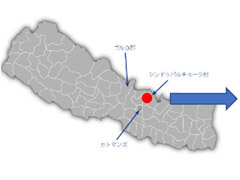 Location of Sindhupalchowk District in the map of Nepal.
Location of Sindhupalchowk District in the map of Nepal.
Source: https://www.jica.go.jp/oda/project/1560420/index.html
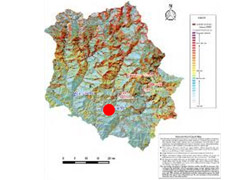 Location of Chautara in Sindhupalchowk District.
Location of Chautara in Sindhupalchowk District.
Source: https://openjicareport.jica.go.jp/pdf/12293171_01.pdf (external site) p.107
Due to the proximity and the pleasant climate all year round, it is a popular destination for a weekend get-away among people from Kathmandu who enjoy outdoor activities such as picnic and trekking with Himalaya views and rafting on the Sunkoshi River and the Bhotekoshi River.
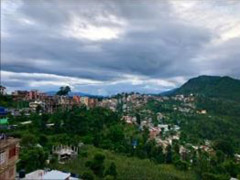 Landscape in Chautara.
Landscape in Chautara.
©Chautara-Sangachowk municipality
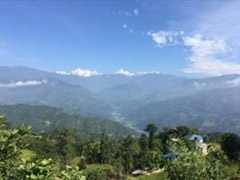 Clear view of the Himalayas.
Clear view of the Himalayas.
Agriculture is the main economic activity in this area, and production of tea and coffee in addition to vegetable farming has become widespread in recent years. The 2015 earthquake severely damaged the agriculture sector as well, thus JICA provided assistance for agricultural recovery in Sindhupalchowk including Chautara after the earthquake.
In 2015, an earthquake of magnitude 7.8 occurred on 25 April in Gorkha District, followed by a big aftershock of magnitude 7.3 in the epicenter 75 km to the northeast of Kathmandu. Thus, being very close to the second epicenter, Sindhupalchowk experienced tremendous impacts of the two major shocks. One study reports that as many as 95% of buildings in Chautara Municipality were severely damaged. The main road which runs through the center of the city was shut down for a long time because shops and residences on both sides of the road collapsed.
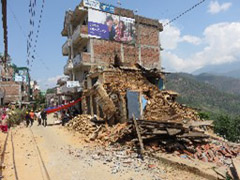 Central part of Chautara immediately after the earthquake. Many brick buildings were completely or partially damaged.
Central part of Chautara immediately after the earthquake. Many brick buildings were completely or partially damaged.
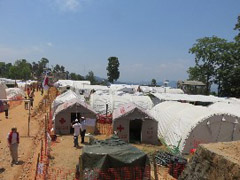 The open area next to the Municipality Office was filled with tents set up for Chautara residents who lost their houses as well as emergency relief workers.
The open area next to the Municipality Office was filled with tents set up for Chautara residents who lost their houses as well as emergency relief workers.
Though many houses and schools were damaged, today after five years, over 90% of the total of 14,580 houses which needed reconstruction have already been completed. JICA-supported Emergency Housing Reconstruction Project (EHRP) provided technical training for masons for acquiring knowledge and skills on seismic resistant housing. It also helped strengthen mutual help mechanisms within communities, which in turn made steady progress in housing reconstruction possible. Furthermore, promoting mutual support mechanisms within communities was particularly helpful in addressing the needs for reconstruction among the vulnerable groups such as elderly people and women-headed households.
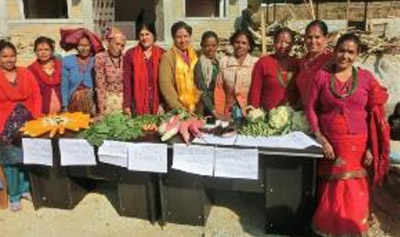 A group of women who proudly present vegetables they produced after benefitting from the livelihood recovery training by a JICA project.
A group of women who proudly present vegetables they produced after benefitting from the livelihood recovery training by a JICA project.
As clearly shown by the example of housing reconstruction, strengthening the mutual support mechanisms which exist in the communities would lead to achieving "Build Back Better" and strengthening local capacity and resilience against future disasters. Our project aims to promote participatory recovery, by placing major focus on this concept of mutual support among affected local people themselves.
We will be sharing more updates on various activities in Chautara as we move ahead. Stay tuned!
- About JICA
- News & Features
- Countries & Regions
- Our Work
- Thematic Issues
- Types of Assistance
- Partnerships with Other Development Partners
- Climate Change / Environmental and Social Considerations
- Evaluations
- Compliance and Anti-corruption
- Science and Technology Cooperation on Global Issues
- Research
- JICA Development Studies Program / JICA Chair
- Support for the Acceptance of Foreign HRs / Multicultural and Inclusive Community
- Publications
- Investor Relations
